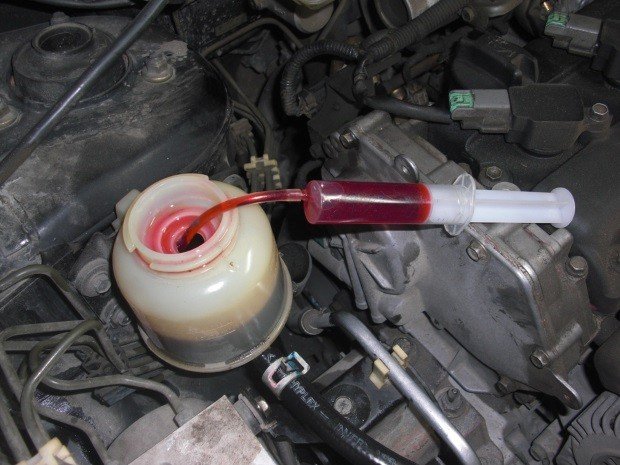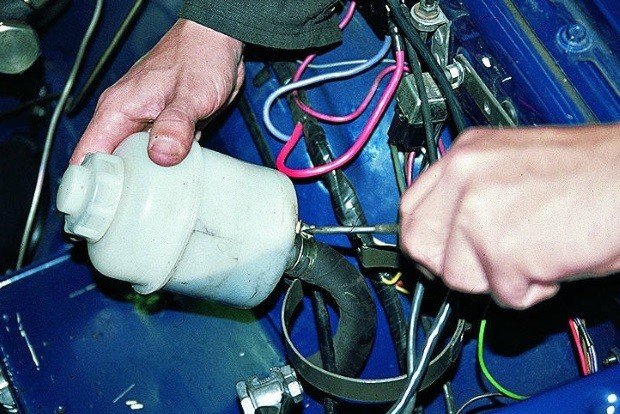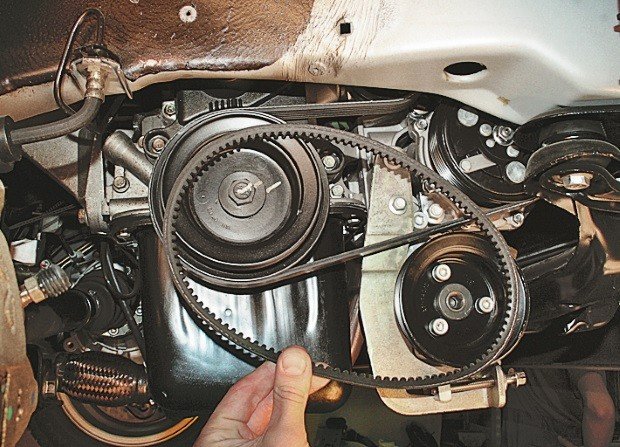One of the stages of car maintenance work, which can be successfully performed on your own, is replacing the fluid in the power steering. Today, the vast majority of passenger cars are equipped with a power steering system. Thanks to the hydraulic booster, even weak ladies can turn the steering wheel with one finger. This system is located in the engine compartment and is a closed loop consisting of a special steering rack, pump, expansion tank and flexible pipes. The hydraulic power steering system is driven from the crankshaft pulley through a belt drive.
When you need to change the fluid in the power steering
It is necessary to change the fluid in the power steering in several cases.
- Despite the absence of a certain period of oil change in the steering system in some car maintenance manuals, the fluid cannot retain its qualities indefinitely. Experts recommend sticking to the following formula. If a car "runs" from 10,000 to 20,000 km per year, then replacement can be done in 2-3 years. That being said, it's best to run a simple test. It is enough to take a few drops of working fluid from the power steering expansion tank and place them on light paper or a napkin. If the oil is clear with a distinct color, then it can still be used. But when mechanical particles, impurities are visible on the surface of the napkin, the oil itself is cloudy or there is a burnt smell, the liquid must be replaced immediately.
- It is necessary to completely replace the fluid in such unpleasant cases as repairing the power steering or removing the steering rack. Even relatively fresh oil becomes contaminated during dismantling, restoration and subsequent assembly. Therefore, new fluid should be purchased to refill the refurbished system.
What oil is used in power steering
Most often, modern vehicles work with technical fluids of the PSF type, which are designed for the hydraulic power steering system. Some motorists have similarly used the product called Dexron 2, which is a versatile material for different vehicle systems. What kind of oil to fill in the power steering of a particular car, you can find out from the manufacturer's recommendations. They are described in the instruction manual. When replacing, it is necessary to fill in only one type of oil to prevent the formation of clots and lumps that can clog the holes in the steering rack or pump.

A fluid for a hydraulic system must have a whole range of properties:
- operating oil temperature is not less than 110 ° С;
- the presence of additives that improve the operation of the solution under pressure;
- constant viscosity of the liquid at different loads and temperatures;
- lack of foaming;
- reduced wear of parts in the steering system;
- prevention of corrosion;
- no swelling effect of rubber seals and hoses;
- inertness of oil to body paintwork.
Power steering oil change technology
Motorists use two schemes for replacing the fluid in the power steering system. One of them provides for a partial renewal of the oil, while the other option requires replacement of the entire volume of technical fluid. The choice of the service method will determine how to replace the fluid in the power steering. Fully or partially.
Partial replacement
Partial replacement is allowed in cases where the car owner knows the type of fluid that is poured into the power steering. If the power steering reservoir is dirty or suspicious spots or particles appear on the surface of the oil after standing the car, then you can try a partial fluid change. In this case, you will need a large syringe (20 cubes) and a hose that is suitable in diameter and length.

First, you need to unscrew the cap of the power steering reservoir, and then, using a syringe and a flexible tube, remove all contents from the reservoir. New oil is added to the upper mark, the engine starts and the steering wheel is turned all the way in both directions several times. After this procedure, the engine is stopped and the fluid level is checked on the dipstick. At this stage, you can evaluate the quality of the resulting solution.
Complete replacement
To completely replace the fluid in the power steering system, it is necessary to prepare a container for collecting the waste solution with a volume of 2-3 liters.

In addition to timely oil changes, the motorist must maintain the power steering fluid level within the specified range. If the level drops every day, it means that a depressurization has occurred in the system. Sometimes leaks occur in the pump, hoses occasionally crack, but most often the malfunction is found in the steering rack.
There is another important power steering element that connects the pump to the crankshaft pulley. If the belt breaks, the hydraulic booster stops working, but you can get to the garage on your own. Only the steering wheel will turn much harder.
When the belt tension is loosened, an unpleasant squeal can be clearly heard when the steering wheel is turned all the way when the car is stationary. To fix the problem, it is necessary to tighten or replace the worn belt.

Do-it-yourself oil change in the power steering is not a difficult operation. If you consistently perform all the stages, then you will be able to cope with the work earlier than in 30 minutes. But the steering system will work properly for many years.



